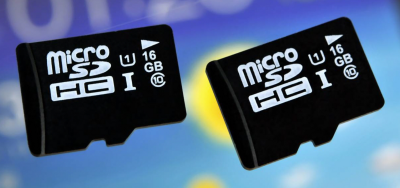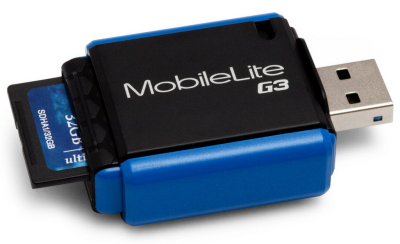- Details
- Flash Memory
Samsung Electronics Co., Ltd., the world leader in advanced memory technology, today announced that it is now mass producing Ultra High Speed–1 (UHS-1) interface microSD cards that support the highest performance levels required on advanced LTE (Long Term Evolution) smartphones and tablets.

“MicroSD cards with a UHS-1 interface offer users an extremely high level of performance on their LTE smartphones and for other advanced mobile applications. This allows consumers to enjoy high-quality images and video playback directly from the memory cards, which fully support the advanced performance features of diverse digital gadgets,” said Wanhoon Hong, executive vice president, memory sales & marketing, Samsung Electronics. “Our UHS-1 card demonstrates how Samsung plans to continually expand its line-up of memory cards in accommodating the market need for higher densities and greater performance.”
- Details
- Flash Memory
OCZ Technology Group, Inc., a leading provider of high-performance solid-state drives (SSDs) for computing devices and systems, today introduced Indilinx Everest 2, its next-generation SSD platform that delivers an industry-best performance of 120,000 random input/output operations per second (IOPS) for SATA-based drives. In addition to this unprecedented transactional performance, the Everest 2 features the most advanced flash management capabilities which can significantly extend NAND flash life and enhance SSD reliability. This innovative controller platform will debut in OCZ's new Vertex 4 SSD product line.
The Indilinx Everest 2 family of solid state drive processors establishes a new computing and storage paradigm by delivering breakthrough performance and uncompromising reliability to next-generation SSDs. Combining a 400MHz dual-core CPU, 6Gbps SATA Revision 3.0 interface, and support for the latest, most advanced NAND flash memory technology available, Everest 2 exceeds the needs of the most demanding SSD environments.
Everest 2 features a highly optimized system architecture, showcasing the potential of tight integration between hardware and firmware. By combining a highly parallel and pipelined hardware design with extremely efficient data management algorithms, Everest 2 achieves unsurpassed speeds under any workload, regardless of data type and I/O pattern. This results in near-zero data access latency and best-in-class transactional performance of any SATA processor available today. Everest 2-powered SSDs enable a superior user experience from instantaneous system booting and application loading to exceptional SSD responsiveness in even the most demanding and compute-intensive applications.
- Details
- Flash Memory
OCZ Technology Group, Inc., a leading provider of high-performance solid-state drives (SSDs) for computing devices and systems, today introduced the Vertex 4 SATA III SSD series featuring the company’s advanced Indilinx Everest 2 controller platform. The Vertex 4 delivers the industry’s highest input/output operations per second (IOPS) performance for SATA-based drives across a wide variety of application workloads making this fourth generation flagship product line ideally suited for demanding computing and workstation environments. It consistently accomplishes superior real world performance over the long term regardless of whether the data streams are in compressed or uncompressed formats.

The Vertex 4 features sequential bandwidth up to 535 MB/s, maximum random performance up to 120,000 IOPS, and with hard to manage incompressible data, delivers 95,000 4K random read IOPS and 85,000 random write IOPS. In comparison to OCZ’s previous generation Vertex 3 SSD, rated at 60,000 sustained 4K random write IOPS, the Vertex 4 doubles typical transactional performance. The Vertex 4 also generates best in class latency as low as 0.04ms for read operations and 0.02ms for write operations, delivering an improvement of approximately 80 percent over the Vertex 3. In typical use case scenarios, the Vertex 4 outperforms the Vertex 3 by as much as 400 percent.
- Details
- Flash Memory
Kingston Digital, Inc., the Flash memory affiliate of Kingston Technology Company, Inc., the independent world leader in memory products, today announced it has released the third generation of its popular MobileLite portable card reader. MobileLite G3 (Kingston part #: FCR-MLG3) is a compact, multi-functional USB 3.0 card reader that lets users easily transfer digital data, photos, games, music and more stored on memory expansion cards between all kinds of digital devices.

MobileLite G3 supports SD/SDHC/SDXC, microSD/SDHC/SDXC and MSPD. It allows users to carry a single device to store, transfer or read data on any USB 3.0 or 2.0 host device while using a variety of Flash cards for mobile phones, digital cameras, tablets, netbooks, computers, MP3 players and more. MobileLite G3 meets the USB 3.0 specification and SDA 3.01 standard, and is backwards compatible with USB 2.0.
- Details
- Flash Memory
Toshiba America Electronic Components, Inc. (TAEC), a committed leader that collaborates with technology companies to create breakthrough designs, today announced that it has reached a milestone -- 2012 marks the 25th anniversary of Toshiba's invention of NAND flash memory.
Much has changed since 1987 -- the NAND flash market has grown rapidly, with flash memory shipping almost 8X more gigabytes (GB) in 2011 than DRAM. NAND flash has become the high density silicon storage of choice. NAND flash memory is used in a variety of memory cards and USB drives, and is found in many consumer, industrial and enterprise cloud applications. Toshiba's innovation has carved out a path to a new era in which consumers are able to carry videos, music, books and data with them wherever they go. Designed with a very small cell size to enable a low cost-per-bit of stored data,Toshiba's NAND flash technology is unleashing the mobility of content, thus fueling innovation in the development of products for everyone from consumers to enterprise.
"NAND flash has truly permeated our lives -- this technology has been a game changer, making the world a different place and making many of the products we use today possible," noted Scott Nelson, vice president, Memory Business Unit, TAEC. "The cost/performance of NAND flash continues to stand the test of time. NAND flash is leading the way to thin and light hardware, has made the mobility of content possible, and is enabling 'green' storage in the data centers."

